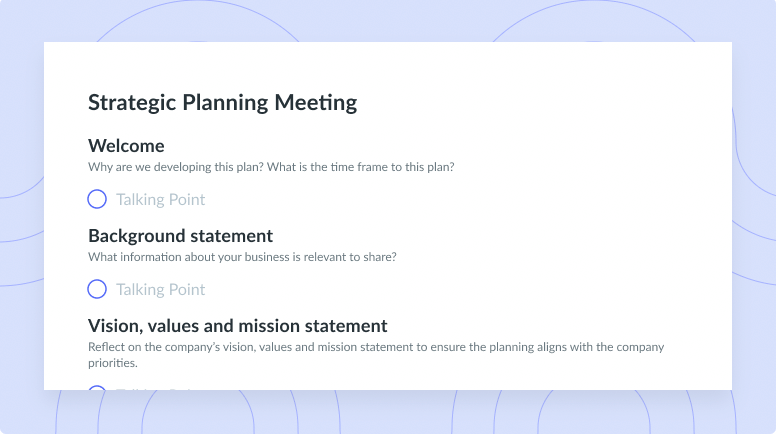
PI Planning Meeting Template
Get this templateThis PI Planning Meeting Template curated by the Scaled AGILE team will help adjust goals and narrow down the outcomes to achieve the business value.


What is PI Planning
PI Planning stands for Program Increment Planning. PI Planning is a scheduled, mostly face-to-face event that involves Agile Release Train team members. The ART teams meet to discuss the vision and mission of the project/ business, making sure everyone’s targets are properly aligned.
Practicing PI Planning is essential for the success of any company, and if you dont undertake the cadence-based events, you’re not practicing SAFe. Managing the Scaled Agile Framework (SAFe) workflow patterns requires that all team members are physically present for the two-day PI Planning session. With this, all ART members are on the same page with the technological and business missions of the company.
What is a PI Planning Meeting?
A PI Planning meeting is a two-day event that happens after every 8-12 weeks, where the product managers, stakeholders, and all ART teams meet to discuss the company’s direction. It’s a session where everyone involved meets face-to-face and gets to know one another deeper. The meeting involves 50-125 members attended by heads of ART teams, and the pi planning agenda includes the company’s targets, goals, and vision.
Meeting frequency
PI Planning meetings are held every 8 to 12 weeks after the previous meeting. This is important, especially for big corporations with two or more Agile Release Train teams working together. The meetings provide the perfect chance to make sure all teams are working towards the same goal and the company’s vision.
Who attends these meetings?
Considering the importance of the PI Planning meetings to a company, several people must attend. These include ART team members, product owners, suppliers, consumers, developers, and stakeholders. It’s not worth holding a PI Planning event if the stakeholders and team members cannot attend; it beats the purpose of bringing everyone together.
Business benefits of PI Planning
“The ratio of We’s to I’s is the best indicator of the development of a team.” – Lewis B. Ergen.
PI Planning sessions have several benefits to your business, including:
- Building the social network among teams. Since all leaders of the specific teams involved must physically show up for the event, everyone gets to interact. This includes the remote working team members who rarely meet their colleagues.
- Creating face-to-face communication between stakeholders and team members. The event ensures that the team members and stakeholders have a direct line of contact.
- Pinpointing cross-team dependencies and encouraging team collaborations. This helps figure out how the teams work together to achieve the organization’s goals.
- Swift decision-making. There’s no waiting for someone to get back to you on a pending issue when people are together. Debates and decisions get handled immediately instead of taking weeks and months.
- Get rid of work in progress (WIP). All team members are on hand to tackle pending work and match the work demand to the available capacity.
- Harmonize business goals with the company’s vision, objectives, and as well as business requirements.
How to Run an Effective PI Planning Meeting
To run a successful PI Planning meeting, everyone involved must understand the objectives, goals, vision, and the business value to be achieved. Throughout the process, there has to be proper communication, with doubts and questions raised and dealt with effectively during the session. You will be well prepared using our pi planning template, so what is involved?
Preparation
Adequate preparation is required to ensure a worthwhile PI Planning meeting. The areas to handle during preparation are:
- Organizational readiness. The meeting is planned at a time when all stakeholders are available. The teams check on priorities and assign essential roles before the event.
- Content readiness. Proper briefings that include the meeting’s purpose and vision should be available to all stakeholders.
- Logistics readiness. Securing the appropriate venue, accommodation and catering is an important step in the meeting’s preparation. If the event is virtual, the technological infrastructure should be up and running before the meeting.
Outcomes of a PI Planning Meeting
At the end of the PI Planning meeting, the company should have the following:
Dedicated PI objectives. Each team sets clear objectives and tasks that they’ll use during the PI planning. The business owners then assign business value to the said objectives.
Program board. This will outline the milestones, delivery dates, and potential risks and define the teams’ interdependencies. Having a PI Planning meeting with the team members and stakeholders is vital as it helps align the business visions of the company. The event also helps foster better ART team collaborations, increasing efficiency in the business. Use our pi planning template for easy, efficient meetings with your employees and stakeholders
What’s inside this PI Planning Meeting Template
Program Increment (PI) Planning is a face-to-face, cadence-based event that acts as the heartbeat of the Agile Release Train (ART), uniting all of the ART’s teams around a common objective and vision.
This 2-day agenda was curated by the Scaled AGILE team.
Day 1
1 Business context
The senior executives discuss the company’s current state, the Portfolio Vision, and how well existing solutions meet everyday consumer needs.
2 Product/solution vision
Product presents the current vision and any modifications since the previous PI planning event and any approaching Milestones.
3 Architecture vision and development practices
System Architect/Engineering presents the vision for the architecture.
4 Planning context and lunch
Outline the planning process as well as the anticipated outcomes.
5 Team breakouts #1
Teams assess their capacity for each Iteration and identify the backlog items they will most likely require to materialize the features in the breakout.
6 Draft plan review
Teams submit critical planning outputs such as capacity and load, draught PI objectives, potential risks, and dependencies while reviewing the tightly timeboxed draught plan.
7 Management review and problem-solving
The draught plans are likely to have issues. During the problem-solving meeting, management may negotiate scope changes and other matters by agreeing to various planning adjustments.
Day 2
1 Planning adjustments
The following day, management will present any changes to the planning scope, people, and resources.
2 Team breakouts #2
Teams continue to plan based on the previous day’s programme, making revisions as necessary. They formalize the PI’s objectives, and the Business Owners attach business value to them.
3 Final plan review
All teams submit their plans to the group during this session.
4 Program risks
During the planning process, teams identified programme risks and impediments that could jeopardize their capacity to achieve their goals.
5 Confidence vote
Teams vote on their confidence in attaining their team PI targets.
6 Plan rework
Teams revise their plans as needed until they achieve a high level of confidence.
7 Planning retrospective and moving forward
Finally, the RTE facilitates a brief retrospective for the PI planning event to document what went well, what didn’t, and what can be improved next time.
8 Action items
What are the next steps?











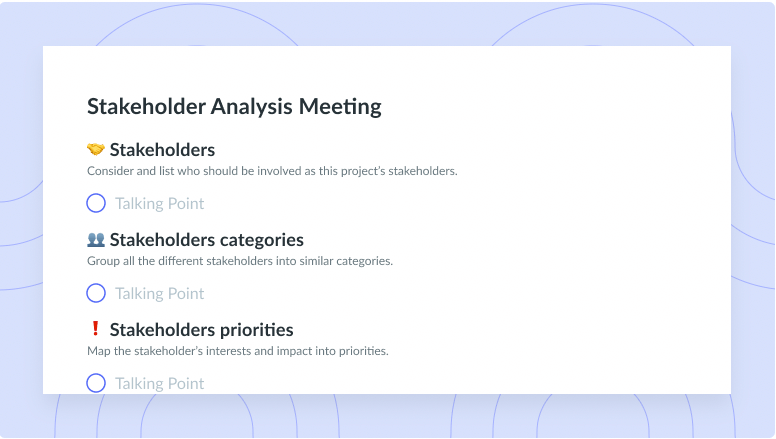
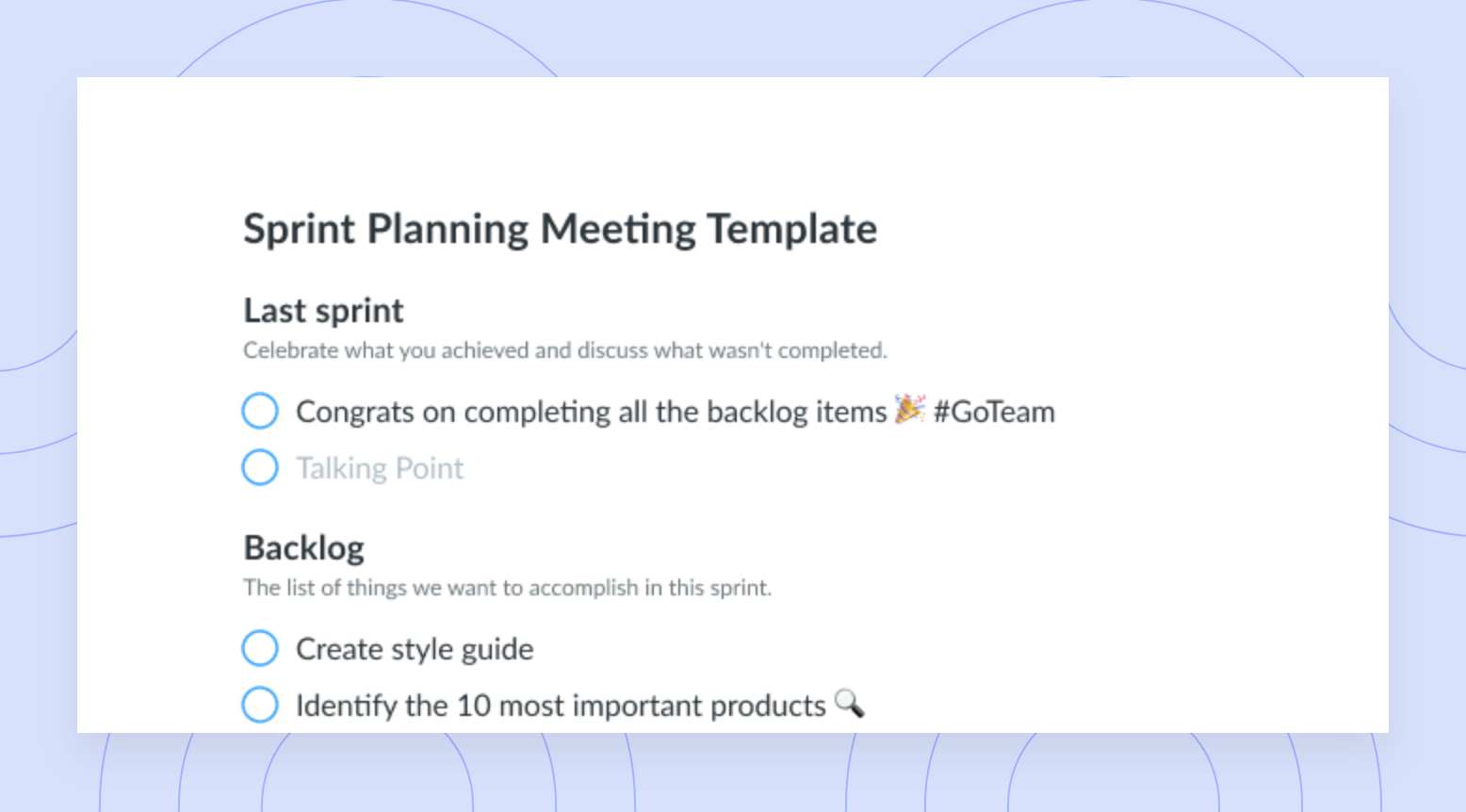
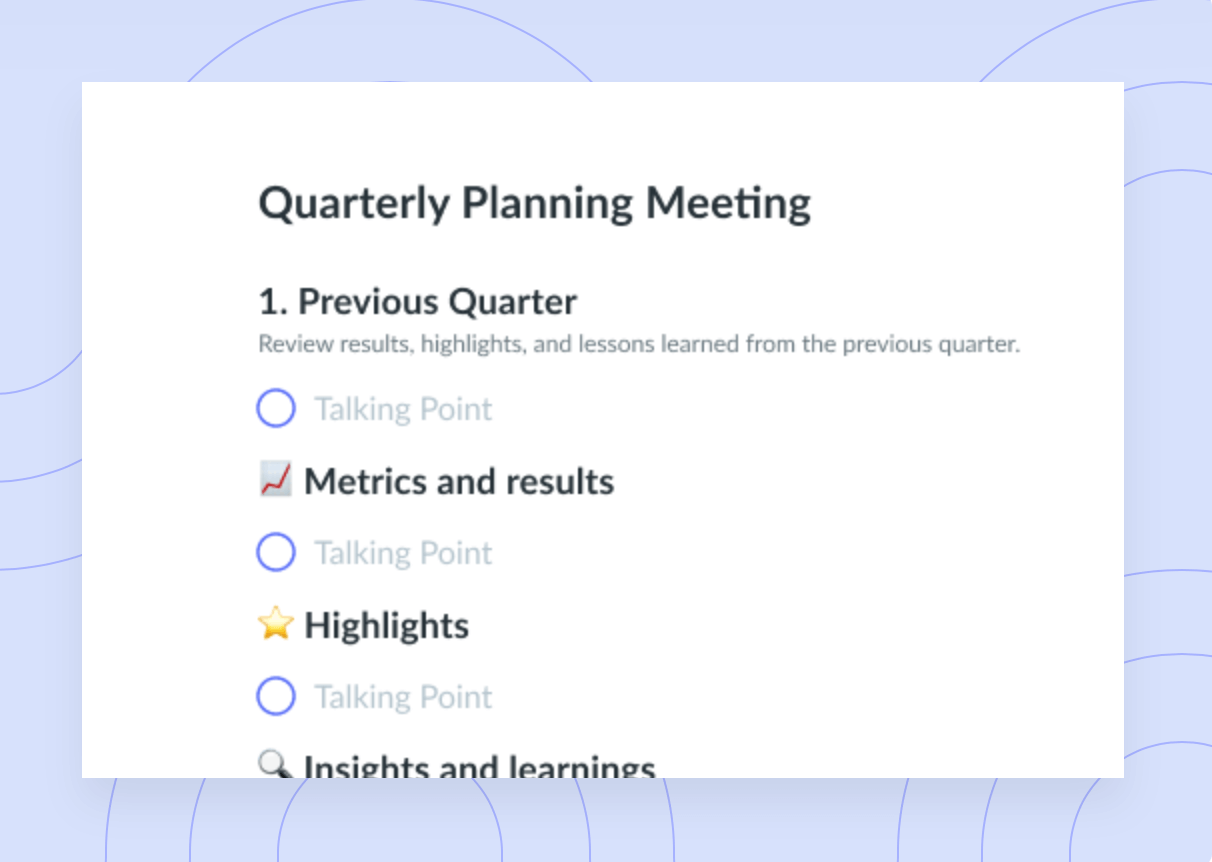
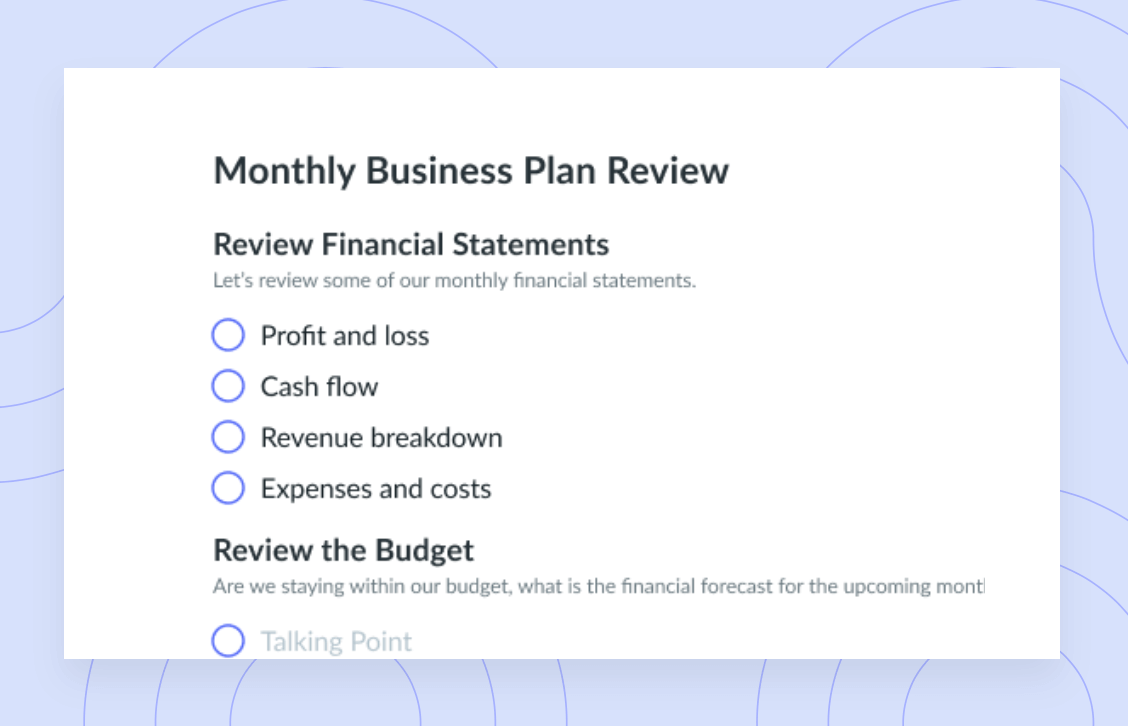
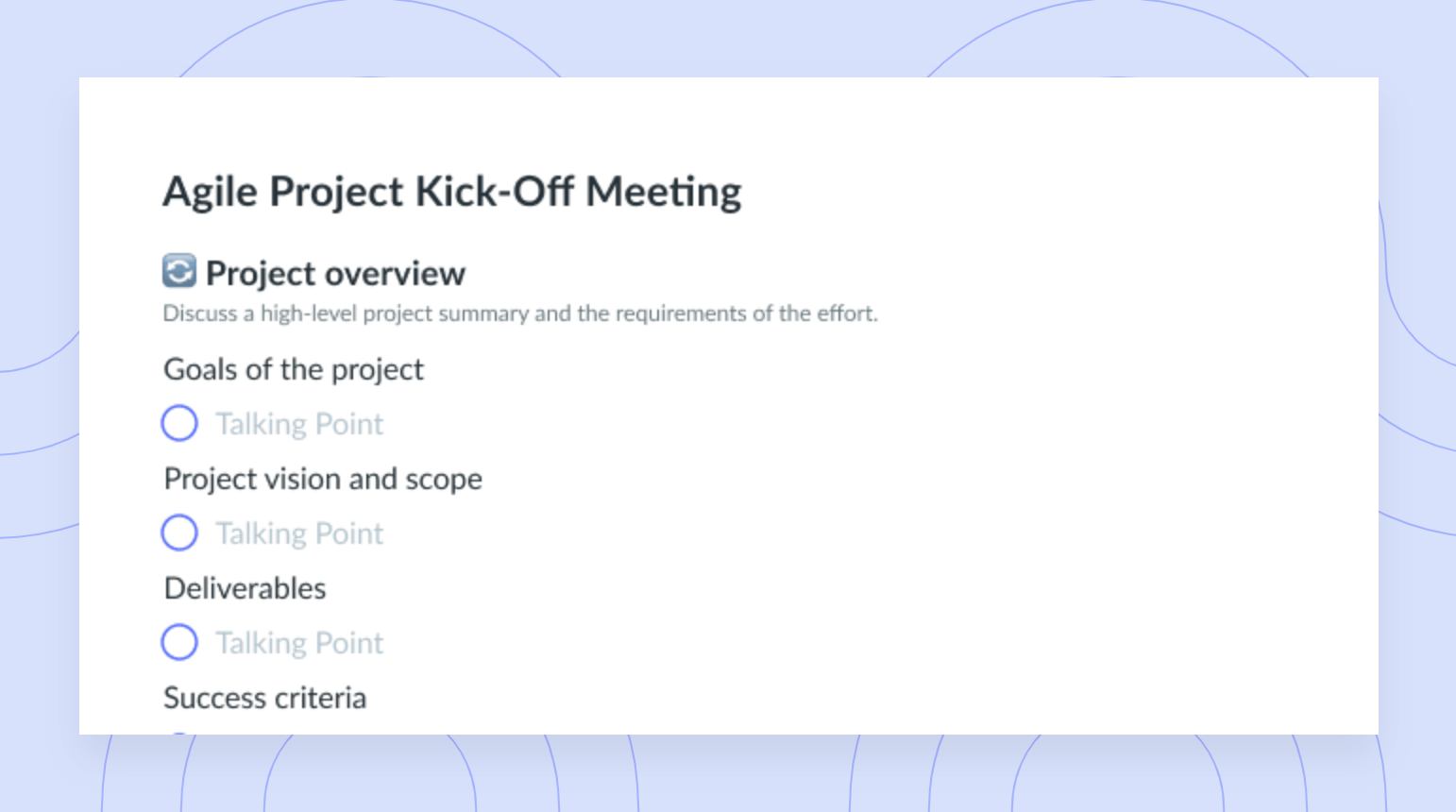
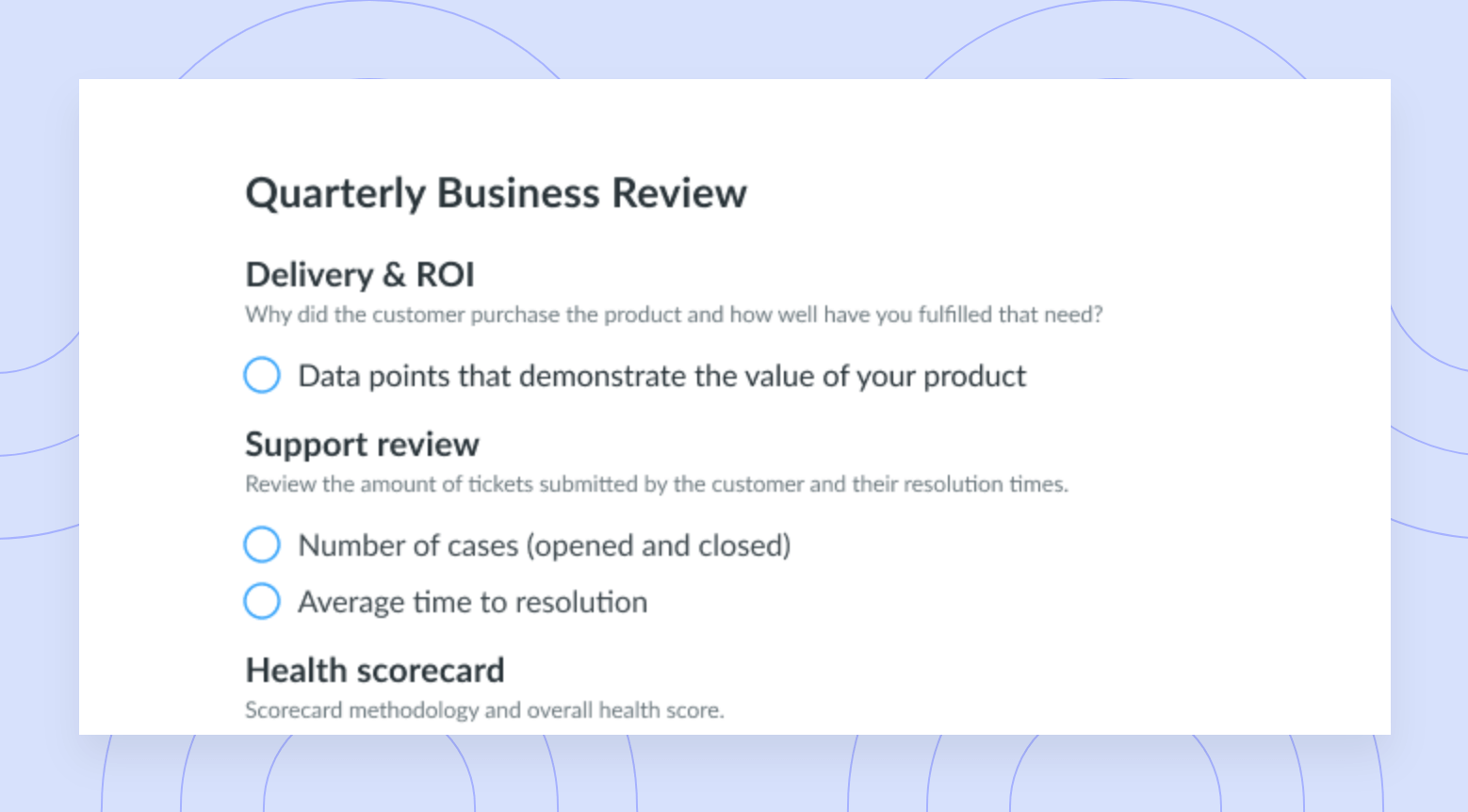
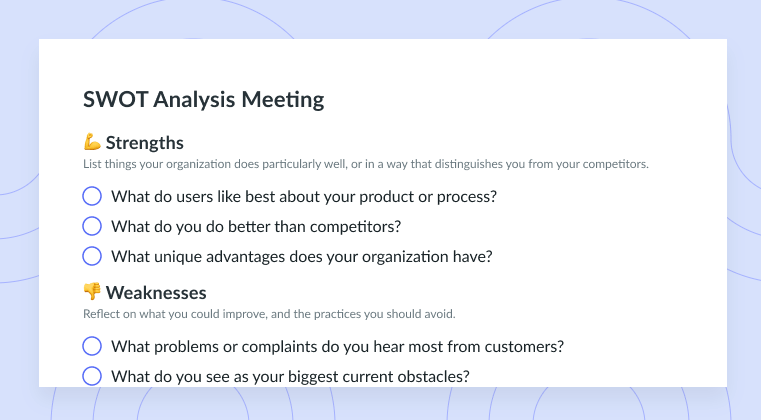
![What? So What? Now What? [Reflection Meeting] Template](https://fellow.app/wp-content/uploads/2021/08/What-So-What-Now-what-preview-v2.png)